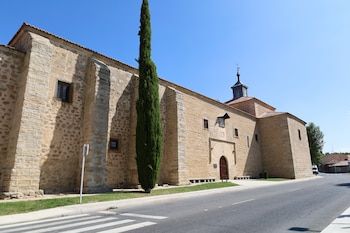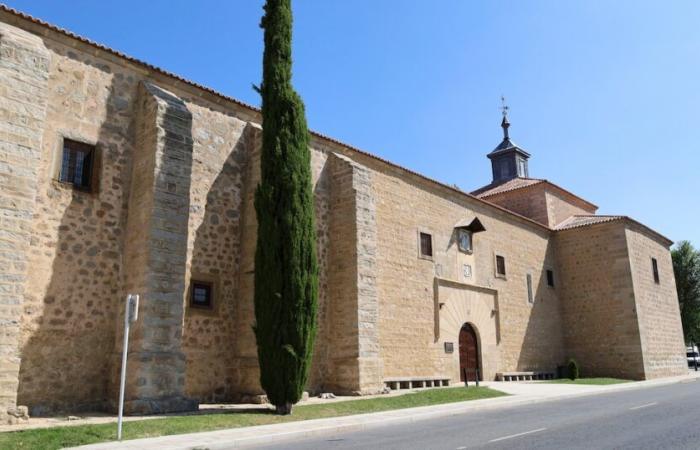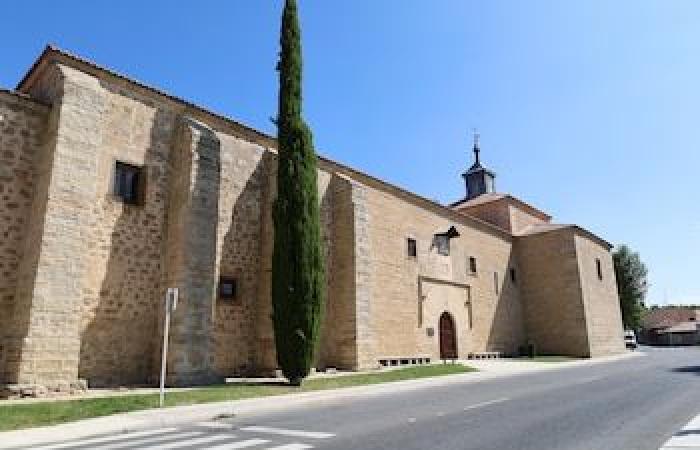
Walled, sober and loaded with history, Ávila rises more than 1,100 meters above sea level as one of the most special cities in Castilla y León. Its medieval layout, chaired by its famous wall Romanesque Almost intact, it protects a historic center that retains the spiritual, literary and architectural pulse of past centuries. The town, declared a World Heritage for UNESCO, combines religious heritage, Castilian tradition and Teresian legacy in an environment that invites recollection and contemplation.
His visit is something mandatory, because he has one of the most impressive monumental and historical sets in Spain. Thus, get lost by your Jewryits squares and its streets, discover amazing corners and full of history. So much so, that only ten minutes at the foot of the Historic Center of Ávila, where the Romanesque walls continue Monastery of the Incarnation.
The set, sober and silent, is not just one of the most representative samples of the Conventual Castilian architecture of the 16th century, but also a space deeply linked to the Life and work of Teresa de Jesúswhich spent most of his life between his walls.

The monastery of the incarnation is based on 1478 By Mrs. Beatriz de Higuera inside the walled city. However, its current location on the outskirts of the city has its origin in the early 16th century. At this time, the abbey was built on “land acquired to the council and that, previously, It had been the Jewish cemetery”, Explain from the Ávila tourism website. In turn, the monastery is known for being the Santa Teresa de Jesús homewho entered in 1535, with twenty years, as novice in the order of Carmelo and there remained almost uninterrupted until 1562.
The convent, one of the most numerous in the city at that time, had a community that exceeded the hundred religious and accumulated important assets. It was not, however, an austere place of life: the social differences between the nuns were notable and the closing rules were applied in a unique way. Thus, during those 27 years the Carmelita reform was deviseda renewal movement of the order of Carmelo, promoted by Santa Teresa de Jesús and San Juan de la Cruz from 1562. The objective was to return to the simplicity and poverty of the first eremites of Mount Carmelo.
It was also here where he received the spiritual support of figures such as Francisco de Borja and Pedro de Alcántara, with whom he shared the concern to return to the convent a life of recollection and poverty. In addition, Santa Teresa began writing in this monastery THE BOOK OF LIFEand from this place left to found, with enormous difficulties, the convent of San José, the first of the renovated convents that would shape the barefoot branch of the Carmel.

As for its architecture, the monastery rose with a structure formed by four ships arranged around a central courtyard, chaired by a two -storey cloister that is still preserved today. Likewise, at the end of the 16th century, the cell that Teresa occupied was transformed into an oratory, and the construction of a commemorative chapel was projected that would not see the light more than a century later. In 1717 the Transverberation chapelbuilt on four toral arches and topped by a semi -inferous dome. Its current configuration responds to the canons of the religious baroque, loaded with symbolism and theatricality.
The convent as a whole experienced important transformations In the 18th century. The interior of the original church was redesigned under a fully baroque aesthetic. The plant adopted shape Latin cross, With a unique ship covered by cannon vault, dome with pechinas and flashlight. Both the altars and the altarpieces, of later invoice, also respond to the ornamental taste of the time. The Great Swordraised in 1715 on the southern facade of the monastery, completes the architectural profile of the building.
On the other hand, the monastery also has a Museum dedicated to the life and work of Teresa de Jesúsmanaged in collaboration with the Bishopric of Ávila. Among his most outstanding pieces is a drawing attributed to San Juan de la Cruz that represents Crucified Christ, one of the few preserved plastic works of the Carmelite mystic. In addition, the entire group was declared a National Monument in 1983, consolidating its importance as one of the essential spaces of the spiritual, literary and reformist legacy of Teresa.
Even today, the Carmelite community that lives Keep tradition alive Closing that marked the life of the saint, and opens its doors to those who seek to understand, from silence and stone, one of the most significant chapters of the Spanish 16th century.
To visit the monastery of the Incarnation, its schedule must be taken into account, which varies depending on the time of year. Between him October 1 and May 31the schedule is:
- Monday to Friday: from 1:30 p.m. to 3:30 p.m. from 4:00 p.m. to 6:00 p.m.
- Saturdays, Sundays and holidays: from 10:00 a.m. to 1:00 p.m. from 4:00 p.m. to 6:00 p.m.
For its part, of the June 1 to September 30the schedule is extended and remains uniform every day: from 10:00 a.m. to 1:00 p.m. from 4:00 p.m. to 7:00 p.m. In all cases, the last pass is made 30 minutes before closing. During Holy Week, the schedule is reduced in certain days, such as Good Friday, in which visits are allowed only in the morning, from 10:00 a.m. to 1:00 p.m. As for the preciothe general rate is 2 euros per person, with a reduced ticket of 1.5 euros for groups. The entrance to the Church is free.







